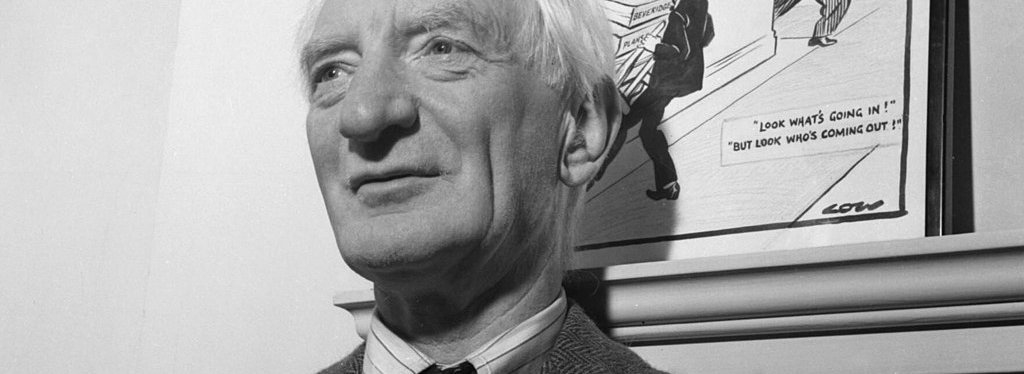| 7 mins read
Eighty years on, the Beveridge Report, or at least our faded memory of what it represents, remains a touchstone of social policy debate in the UK. Every few years there are repeated calls for a ‘Back to Beveridge’ or a ‘new Beveridge’. A yearning for a contemporary Beveridge moment— an authoritative blueprint by some ‘great-and-good’ figure for rebuilding the welfare state – still commands great power over our collective imagination.
There is, however, an alternative minting of the Beveridge Report. This recognises it brilliance but also registers that it was organic as well as radical, contested rather than consensual, and intellectually pluralistic rather than an Urtext of British social democracy. It seeks not to eulogise the Report’s substantive agenda, which was rooted in a particular moment in time and contained major omissions and limitations, but instead to learn from how the Beveridge Report was conceived and implemented, the better to draw lessons for contemporary reform strategies.
What insights arise from this reading? First, Beveridge did not ‘found’ the welfare state. His report consolidated, extended and universalised forms of social and occupational insurance that had been developing since the late Victorian era and built on the evolving institutional architecture of the British welfare state. Contemporary reform is also likely to be incremental, building on the status quo rather than ripping it all up.
Second, although Beveridge grounded his vision of social security squarely on the contributory principle, the British welfare state in practice has evolved to embody a blend of principles: residual fragments of entitlement in return for contribution, which are overshadowed by means-tested alleviation of need and provision of flat rate benefits and universal services financed through general taxation. A pragmatic, often messy blending of principles and practices is the hallmark of the British welfare state, both before and after Beveridge, and that is likely to remain the case.
Third is the reminder that the Beveridge Report was politically contested, rather than a product of a wartime consensus. Its implementation, alongside the ‘allied services’ of the NHS, social services and a full employment economy, was the product of political strategy. Some vested interests were confronted while others were conciliated, as a coalition of support was crafted for key reforms. Beveridge was also intentionally intellectually pluralist and his plan did not represent a clean ideological win for any one side.
How does this debate on Beveridge relate to our current conjuncture? The last decade has seen major retrenchment: in key respects, today’s welfare state is now inadequate, partial and punitive. But if we look back over the last generation we can see there have also been key advances that have persisted – a new system of tax credits, the development of childcare and early years services, and the restoration of a near universal State Pension and auto-enrolment in workplace pensions. None of these gains emerged out of a grand blueprint for a new welfare state yet Beveridgean approaches can be detected: they were incremental, intellectually pluralist, ‘political’, grounded in social-economic trends, and responded directly to growing political-economic coalitions.
Today, our starting point must be to solve the most acute social problems that confront us. Above all, these include widespread destitution and the egregious lack of a ‘national minimum’ that was so central to Beveridge’s work; but also a failing and unreformed social care system and an incoherent tax and benefit system for families that leaves millions of children in poverty. Resolving these and other glaring shortcomings in our existing welfare system will require lasting institutional and funding reform.
Crucially, though, building momentum for a stronger welfare state also requires an appetite for experimentation. There would have been no Beveridge Report without the forty years of practical experience of institution building, as well as social empiricism, that preceded it. Today, too, there are real-world initiatives that could help flesh out the future of the post-Covid welfare state.
To begin with, devolution furnishes the UK with a set of possibilities and emerging practical models: for example, targeted child payments for low-income families and top up payments for carers in Scotland; free school meals for all primary school children, and a Basic Income pilot for young care leavers, in Wales.
There is also much to be learnt from innovations in social policy from other liberal welfare states. The governments of New Zealand and Ireland have emerged from the Covid-19 pandemic with proposals to bolster social protection via temporary earnings-related benefits. In California, new legislation is creating a ‘fast food workers council’ with legal powers to set a sectoral minimum wage and regulate labour standards. In New Zealand Fair Pay Agreements will also take a sectoral approach to raising conditions.
This more organic way of approaching how we forge new welfare futures poses its own challenges. Experimentation means messiness and institutional diversity generates inevitable inequities. The task for reformers – as Beveridge so brilliantly demonstrated - is to learn from successful initiatives and fuse them together at a scale, and in a complementary manner, capable of realising new social ambitions.
Beveridge’s final words on his deathbed were ‘I have a thousand things to do’ which seemed a fitting end for a life of ceaseless toil in pursuit of social progress. Those calling for a ‘new Beveridge’ should take inspiration from that spirit of permanent endeavour, not a blueprint which in itself neither started nor finished the task of reform. Rather than waiting for a great figure to point the way, social reformers need to do the hard work themselves.
Need help using Wiley? Click here for help using Wiley



